Volume 17, Issue 4
Displaying 1-14 of 14 articles from this issue
- |<
- <
- 1
- >
- >|
-
1973Volume 17Issue 4 Pages 237-241
Published: 1973
Released on J-STAGE: April 18, 2008
Download PDF (372K) -
1973Volume 17Issue 4 Pages 243-249
Published: 1973
Released on J-STAGE: April 18, 2008
Download PDF (579K) -
1973Volume 17Issue 4 Pages 251-256
Published: 1973
Released on J-STAGE: April 18, 2008
Download PDF (455K) -
1973Volume 17Issue 4 Pages 257-264
Published: 1973
Released on J-STAGE: April 18, 2008
Download PDF (677K) -
1973Volume 17Issue 4 Pages 265-271
Published: 1973
Released on J-STAGE: April 18, 2008
Download PDF (2732K) -
1973Volume 17Issue 4 Pages 273-281
Published: 1973
Released on J-STAGE: April 18, 2008
Download PDF (549K) -
1973Volume 17Issue 4 Pages 283-289
Published: 1973
Released on J-STAGE: April 18, 2008
Download PDF (1224K) -
1973Volume 17Issue 4 Pages 291-295
Published: 1973
Released on J-STAGE: April 18, 2008
Download PDF (354K) -
1973Volume 17Issue 4 Pages 297-302
Published: 1973
Released on J-STAGE: April 18, 2008
Download PDF (988K) -
1973Volume 17Issue 4 Pages 303-311
Published: 1973
Released on J-STAGE: April 18, 2008
Download PDF (730K) -
1973Volume 17Issue 4 Pages 313-316
Published: 1973
Released on J-STAGE: April 18, 2008
Download PDF (328K) -
1973Volume 17Issue 4 Pages 317-318
Published: 1973
Released on J-STAGE: April 18, 2008
Download PDF (157K) -
1973Volume 17Issue 4 Pages 319-320
Published: 1973
Released on J-STAGE: April 18, 2008
Download PDF (163K) -
1973Volume 17Issue 4 Pages 321-322
Published: 1973
Released on J-STAGE: April 18, 2008
Download PDF (761K)
- |<
- <
- 1
- >
- >|
